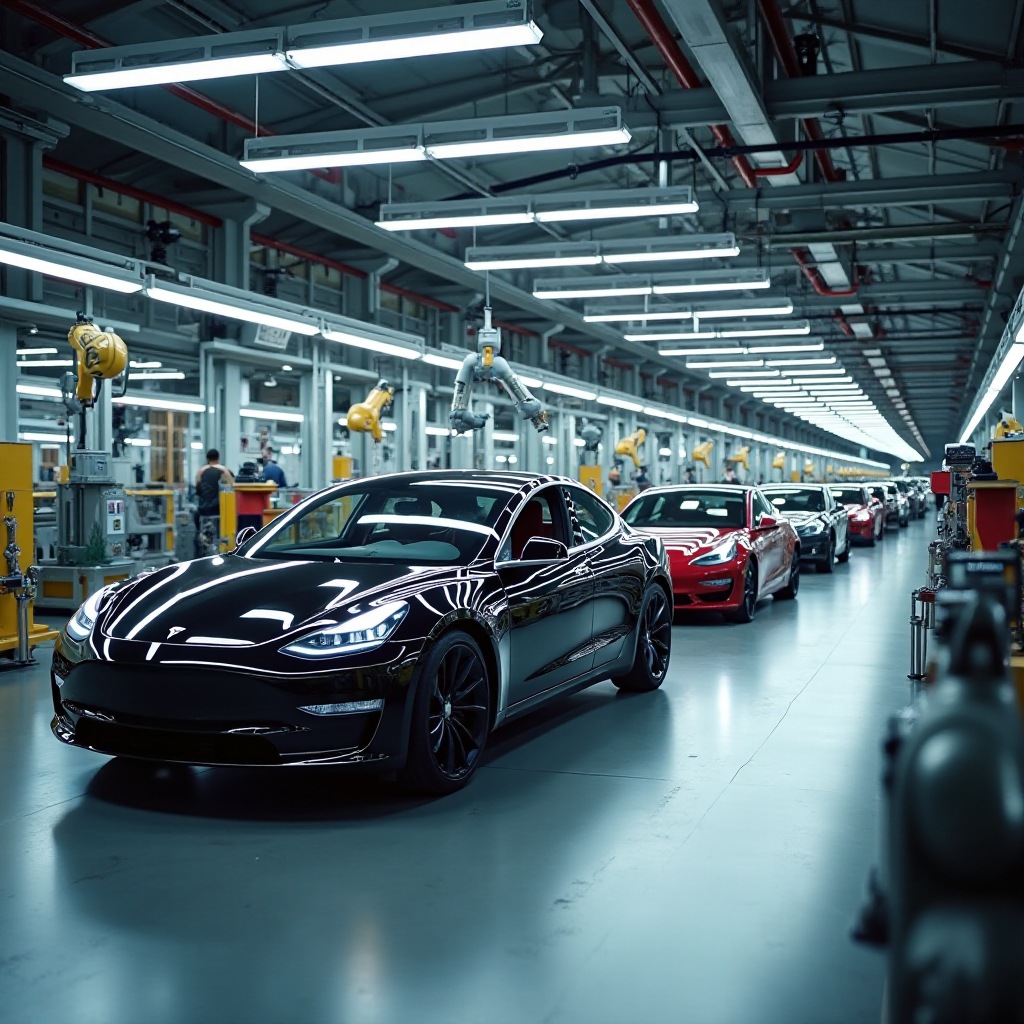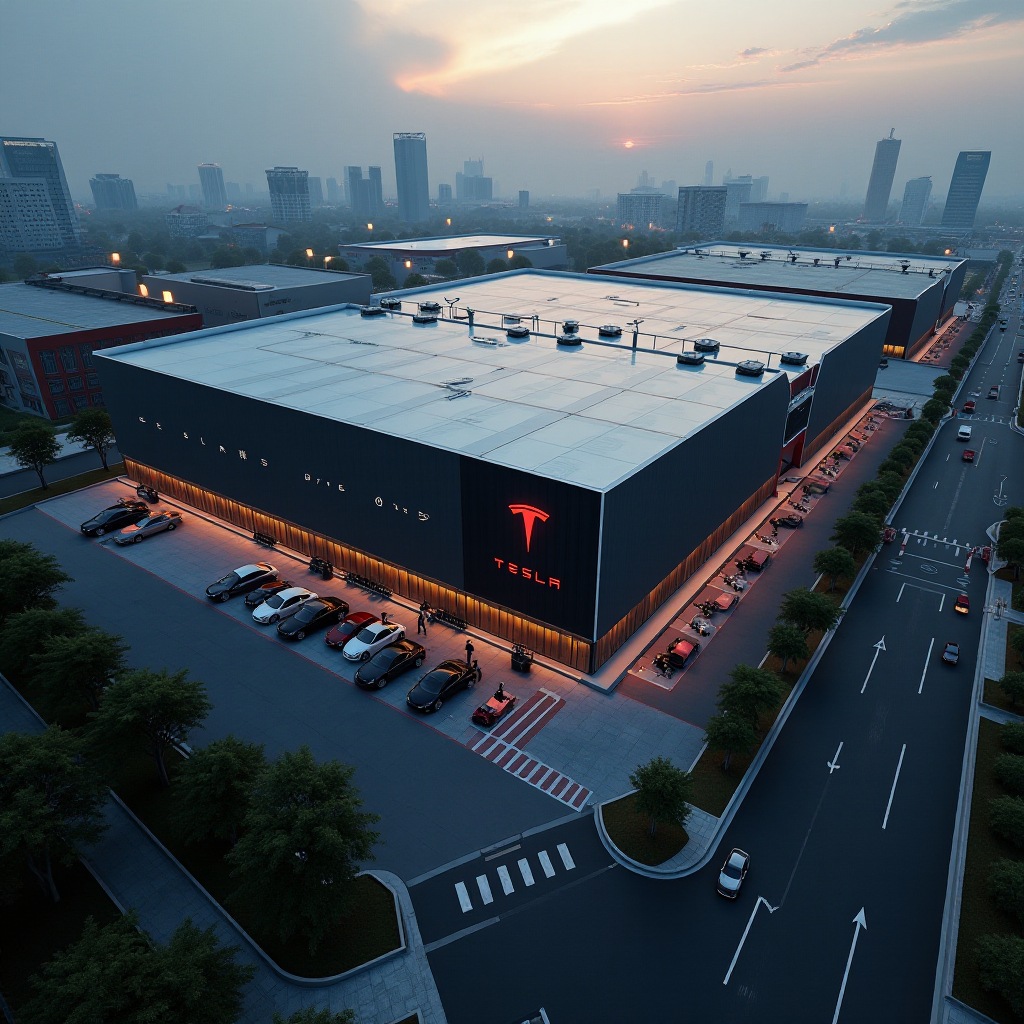Introduction
The Tesla Model 3 has captured the attention of car enthusiasts and environmentalists alike. But where is this groundbreaking electric vehicle made? Understanding the production network of the Tesla Model 3 provides insights into the company’s operational strategies and its commitment to sustainability. From its initial assembly lines in the United States to its expanding presence across Asia and Europe, let’s journey through the manufacturing hubs that bring the Tesla Model 3 to life.

The Global Production Network of Tesla Model 3
The Tesla Model 3 isn’t confined to just one production facility. Instead, it enjoys a diversified manufacturing strategy spanning multiple continents. This global approach helps Tesla meet increasing demand, manage production costs, and tackle regulatory challenges in different regions.
From its primary base in Fremont, California, to newer plants in Shanghai and Berlin, Tesla leverages its international presence to maximize efficiency. Each location has unique roles and strengths, contributing to the Model 3’s worldwide success. Understanding these production networks is crucial for grasping how Tesla scales its operations while maintaining quality and innovation.
Fremont Factory: The Birthplace of Tesla Model 3
The Fremont Factory in California stands as the cornerstone of Tesla’s production capabilities. Originally a General Motors and Toyota joint venture facility, Tesla acquired it in 2010 and has since transformed it into a state-of-the-art plant.
Key Production Figures and Milestones
Tesla’s Fremont Factory became the birthplace of the Model 3 in 2017. The plant has produced hundreds of thousands of units, each embedded with cutting-edge technology. Remarkably, the facility can manufacture up to 500,000 vehicles annually. This incredible output is a testament to Tesla’s efficient assembly lines and innovative practices.
Technological Advancements and Innovations
One of the hallmarks of the Fremont Factory is its relentless push for technological advancement. Automated assembly lines, utilizing thousands of robots, enhance production speed and precision. The factory also focuses on sustainability, incorporating energy-efficient systems and waste reduction practices. Tesla doesn’t just create cars here; it creates the future of automobile manufacturing.
Shanghai Gigafactory: Tesla’s Asian Powerhouse
While Fremont laid the groundwork, the Shanghai Gigafactory takes Tesla’s operations to another level, especially in the lucrative Asian market. With its strategic location, the Shanghai Gigafactory plays a crucial role in Tesla’s global expansion.
Production Metrics and Capacity
The Shanghai Gigafactory, also known as Giga Shanghai, commenced operations in early 2020. It quickly ramped up its production capacity, delivering thousands of Model 3s monthly. The facility is designed to produce 250,000 vehicles annually, with potential for further expansion. Its localization strategy helps Tesla reduce costs related to tariffs and shipping, facilitating better pricing for consumers in the region.
Economic and Market Implications
The strategic importance of Giga Shanghai extends beyond production numbers. It symbolizes Tesla’s ambition to dominate the electric vehicle market in Asia. The facility supports local economies through job creation and stimulates the EV market locally. As a result, Tesla has established a strong foothold, making substantial inroads into China’s vast automotive sector.

Berlin Gigafactory: Tesla’s European Vanguard
After gaining momentum in the US and Asia, Tesla sets its sights on Europe with the Berlin Gigafactory, or Giga Berlin. As Tesla enters the European market, Giga Berlin is set to be a key player in the region.
Construction Updates and Current Status
Construction for the Berlin Gigafactory began in 2019, even amid various bureaucratic hurdles and environmental concerns. Once completed, the facility aims to be a beacon of advanced manufacturing. Initially set to produce up to 500,000 vehicles annually, Giga Berlin will significantly bolster Tesla’s European operations and serve as a crucial node in Tesla’s international network.
Sustainability Practices and Local Impacts
Tesla ensures that Giga Berlin exemplifies sustainable manufacturing. The facility is designed with eco-friendly technologies, including renewable energy sources and comprehensive waste management systems. Beyond its environmental commitment, Giga Berlin is poised to significantly benefit local communities through job creation and economic stimulation, emphasizing Tesla’s commitment to integration and sustainability.

Comparing the Production Facilities
While each of Tesla’s production facilities plays a central role in the assembly of Model 3s, they each bring unique strengths to the table:
– Fremont is rich in history and set benchmarks for production and technological innovations.
– Shanghai exemplifies Tesla’s capability to scale rapidly in emerging markets, balancing cost and market advantages.
– Berlin is the frontier for sustainable and advanced manufacturing, ready to meet European demand.
Each factory not only produces cars but also reflects Tesla’s adaptability and commitment to mastering regional markets.
Conclusion
As the Tesla Model 3 rolls off production lines across the globe, the convergence of technology, sustainability, and market strategy becomes evident. Each facility, whether in Fremont, Shanghai, or Berlin, plays an integral role in Tesla’s expansive vision. Understanding where the Tesla Model 3 is made offers a glimpse into the company’s broader agenda for innovation and market leadership. As Tesla continues to evolve, so too will its manufacturing footprint, ensuring it remains at the forefront of the electric vehicle revolution.
Frequently Asked Questions
Where is the primary production site for Tesla Model 3?
The primary production site for the Tesla Model 3 is the Fremont Factory in California, USA.
How does Tesla’s global production network impact vehicle availability?
Tesla’s global production network allows the company to meet regional demands more efficiently, reduce costs, and shorten delivery times, ensuring broader availability of the Model 3.
What are Tesla’s future expansion plans for Model 3 production?
Tesla plans to expand its production capabilities further, including bolstering operations at its existing factories and exploring new sites in emerging markets to keep up with increasing demand.


